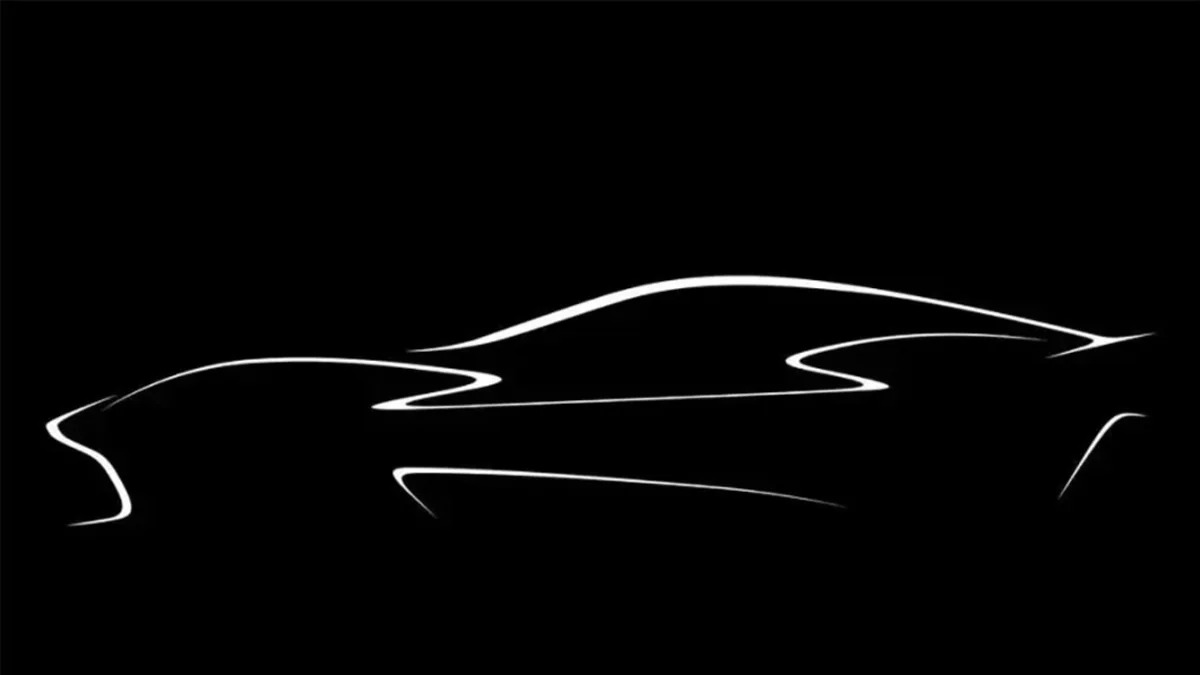Aston Martin has teased the next step in its electrification journey with a line drawing of a new product due in 2025. Some expect this to be an SUV, the first of four battery-electric vehicles that will arrive between 2025 and 2029 and that won't be electric versions of Aston's current model range. The automaker didn't state that this would be an SUV, and comparing the relative heights of the greenhouse, shoulder, and diffuser in the teaser drawing make us wonder. But hey, teases are meant to do just that. When Autocar asked brand and commercial chief Marco Mattiaci which segment the teaser vehicle pointed at, he replied, "If you look at the [EV] market evolution between now and 2030, the growth is in GT and SUV. We've established a good foothold in SUVs with DBX and have been doing GTs for 110 years. [We'll] look at those segments first."
Summarizing what's ahead, a revamped Vantage is meant to debut before the end of this year. Next year, we'll see the DBS successor and the Valhalla. The latter offering will be Aston Martin's first electrified offering, a PHEV built around a 4.0-liter twin-turbo V8 with close to 1,000 horsepower and all-wheel drive. The Mercedes-sourced internal combustion engine powers the rear wheels, Aston Martin is developing its own electric motor units to power the front wheels.
The recent deal with Lucid will show first fruit with the 2025 car. Aston Martin is developing its own modular EV platform able to serve every segment the brand plans to enter. The U.S. startup is providing its twin-motor electric drive units that contain motors, inverter, and transmission turning the rear axle while Aston's own motors turn the front axle. Lucid will provide the cylindrical battery cells it buys from one of three South Korean companies, as well as battery modules placed into a pack of Aston's design but built at Lucid's Arizona plant. "Packs" might be a better term, since Aston Martin technical head Roberto Fedeli told AutoExpress, "We want to be able to create [EV] cars with a roof height of a little bit less than the Vantage." Fedeli went on to point out that this will mean we see battery modules packaged differently than the current convention of sandwiching them in the floor, with multiple modules positioned around the car potentially possible."
The Lucid Wunderbox onboard charger is also part of the tech supply. Lucid chief Peter Rawlinson said everything is an offshoot of what's in the Lucid Air, "The main difference is in thermal integration and battery layout. It will be a different-shape battery pack with a software difference." Aston will continue to use electrical architectures from Mercedes-Benz as part of its ongoing deal with the German automaker, and will source behind-the-scenes components like seat frames HVAC units from recent investor Geely.
If all goes well in England, Fedeli will have a drivetrain on the test bench this year and prototypes on roads next year. Prototypes will be heavily camouflaged, but might give away a "radical design" and novel solutions to creating the emotions and aero efficiency Fedeli said he insists on. "Aerodynamics is becoming the king. We have to manage the aerodynamics, and this could be done by using our partnership with the F1 team through simulation. We have some ideas about blowing the wake at the tailgate of the car in order to reduce the drag as much as possible. We are going to reduce the drag by 50 percent, and this is what we need in order to avoid making the car heavy because of the energy we need on board for range."
Other brand new bits highly important to an EV could include a Brembo brake-by-wire system and Pirelli P Zero tires that can account for individual tire load.


Sign in to post
Please sign in to leave a comment.
Continue